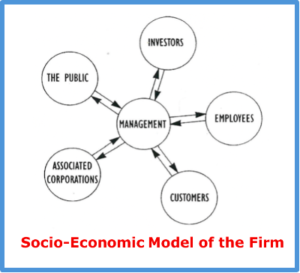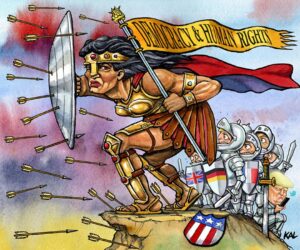Throughout the industrialized world, the rich are getting richer and the poor and middle class relatively poorer. This trend has accelerated in recent years and there is a broad consensus that severe income inequality undermines the stability of societies. Although tolerance for inequality varies from one country to another, depending on other factors that promote social cohesion, research shows that a crisis or social breakdown is near when the top income decile pockets 65 times as much of the country’s total household income as the bottom tenth. Many countries are at or approaching these dangerous levels of inequality. Worldwide, the wealth differential between the top and bottom tenths of society has long exceeded the level at which a social crisis would be inevitable.
Growing Risk of Instability
In advanced the economies over the past several decades, the incomes of the wealthiest 1 percent have grown three times faster than the rest of the population, and the wealth of the top 1 percent is now greater than the combined wealth of the remaining 99 percent. This trend has accelerated rapidly—by 1 percentage point per year—between 2010 and 2015. The bottom 50 percent of the world’s population has less than 1 percent of the total wealth. [1]
The World Economic Forum (WEF), concurring with many other organizations, has described severe income inequality as the biggest risk facing the world. WEF founder Klaus Schwab has observed, “We have too large a disparity in the world; we need more inclusiveness… If we continue to have un-inclusive growth and we continue with the unemployment situation, particularly youth unemployment, our global society is not sustainable.”
The rise of giant tech platforms appears to concentrate wealth even more. Early evidence is Oxfam’s research finding that 8 wealthy individuals own 51% of the world’s wealth (as much as 3.6 billion people). Three of those 8 men are the founders of 3 of the giant tech platforms: Amazon, Microsoft and Facebook. If these platforms evolve into the economy’s “digital infrastructure” for the coming Digital Economy, they are likely to funnel the world’s wealth to themselves for decades.
Taxation and other policies could reduce inequality. Yet, measures such as tax cuts for the rich, shrinking welfare programs in countries such as the US, and business-friendly Supreme Court decisions are making it worse.
Most Likely Forecast
According to the World Economic Forum’s indices, median income has declined by 2.4 percent between 2008 and 2013 across the 26 advanced economies where data is available. [2]
An analysis shows that the richest five people in the world own as much wealth as the poorer half of the world’s population. According to Oxfam, the richest 1 percent of the global population has more wealth than the remaining 99 percent. [3]
The percentage of global wealth accumulated by the top 1 percent of the population has increased rapidly in recent years, from 44 percent in 2010 to over 50 percent in 2016.
The TechCast Expert panel estimates that income inequality is likely to produce a global social crisis by about 2024 +/- 1 year. They are also 60 percent confident in this forecast.
Strategic Implications
The stability of a democracy is based on the shared trust in institutions and belief that decisions made at all levels of government will create an environment of fairness and equality of opportunity. When the wealth distribution gets too far out of line, it undermines that belief. Excessively high levels of inequality have historically destabilized societies and resulted in widespread violence. Nobel Peace Prize-winning economist and entrepreneur Muhammad Yunus has called the growing inequality a “ticking time-bomb.”
Policies for reducing inequality are relatively well understood and widely supported. For example, the International Monetary Fund has repeatedly encouraged governments to implement a wide variety of inequality-reducing policies. Despite some evidence that inequality may not have grown as severe as it seems, there is widespread support for policies that would mitigate the problem. [4]
[1] World Economic Forum, Jan 16, 2017
[2] New York Times, Jan 16, 2017
[3] Common Dreams, Jun 12, 2017




